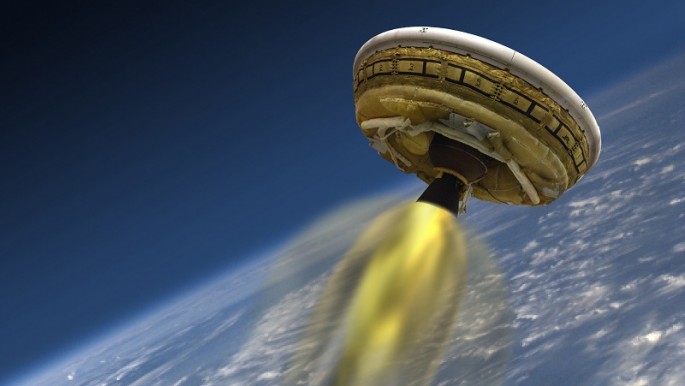NASA's controversial flying saucer is now in Hawaii, conducting more test flights to observe different weather conditions in order to upgrade the technology of the vehicle for future Mars landings.
This bizarre flying saucer is officially called the Low-Density Supersonic Decelerator where this vehicle involves an inflatable, donut shaped mechanism that is powered by rockets called the Supersonic Inflatable Aerodynamic Decelerator. This also includes a massive parachute that can last supersonic wind speeds during landing in an alien world.
Last June 2014, the LDSD conducted its first field test at the U.S. Navy's Pacific Missile Range in Kauai in Hawaii. The test flight involves a helium balloon that is carrying a payload and flying up to 120,000 feet where the rocket boosted the LDSD for another 60,000 feet up in the stratosphere, simulating the atmosphere on Mars.
The 20 foot inflatable decelerator was successfully launched however, when the 110 foot parachute was unfurled, the whole mechanism was shredded into bits.
Researchers from NASA's Jet Propulsion Laboratory analyzed data that was recorded from the first test fight and confirmed that this was a success even if the splashdown of the craft on the Pacific ocean was rougher than first expected.
This data that was collected from the first test flight that lead to the development and redesign of the parachute. According to principal investigator Ian Clark, there is now a stronger and more robust design of the material of the parachute.
This second test flight in Hawaii can be conducted as early as Tuesday however, NASA announced that the wave height on the ocean is not conducive for safe recovery operations. The next scheduled balloon test flight launch will take place not earlier than 1:30 P.M. ET on Wednesday.
This month, the launch window will take as long as two weeks where another launch window can also occur in July according to LDSD project manager, Mark Adler. Live coverage of the test flight including the liftoff will be broadcasted on NASA TV and Ustream.
The LDSD system costs about US $230 million where a period of three years was spent to develop the technology. This drag device technology possesses the capability to deliver 2 to 3 ton payloads safely on the surface of Mars. NASA is currently using technology that can carry about 1 ton of payload, enough for a rover but this is still not enough to help carry out a Martian colonization mission.



























